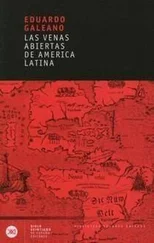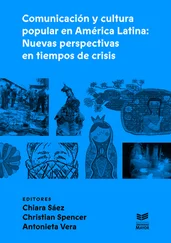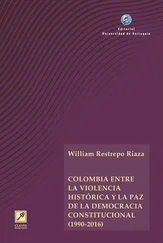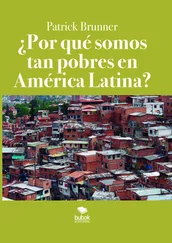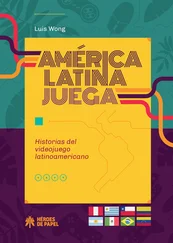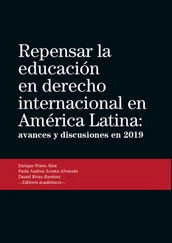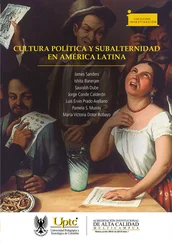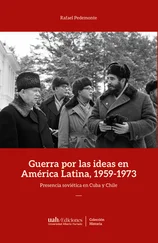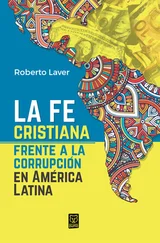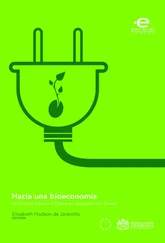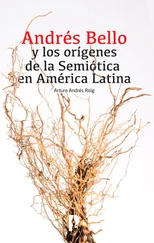Andrew Johnson - Las Iglesias ante la violencia en América Latina
Здесь есть возможность читать онлайн «Andrew Johnson - Las Iglesias ante la violencia en América Latina» — ознакомительный отрывок электронной книги совершенно бесплатно, а после прочтения отрывка купить полную версию. В некоторых случаях можно слушать аудио, скачать через торрент в формате fb2 и присутствует краткое содержание. Жанр: unrecognised, на английском языке. Описание произведения, (предисловие) а так же отзывы посетителей доступны на портале библиотеки ЛибКат.
- Название:Las Iglesias ante la violencia en América Latina
- Автор:
- Жанр:
- Год:неизвестен
- ISBN:нет данных
- Рейтинг книги:4 / 5. Голосов: 1
-
Избранное:Добавить в избранное
- Отзывы:
-
Ваша оценка:
- 80
- 1
- 2
- 3
- 4
- 5
Las Iglesias ante la violencia en América Latina: краткое содержание, описание и аннотация
Предлагаем к чтению аннотацию, описание, краткое содержание или предисловие (зависит от того, что написал сам автор книги «Las Iglesias ante la violencia en América Latina»). Если вы не нашли необходимую информацию о книге — напишите в комментариях, мы постараемся отыскать её.
Las Iglesias ante la violencia en América Latina — читать онлайн ознакомительный отрывок
Ниже представлен текст книги, разбитый по страницам. Система сохранения места последней прочитанной страницы, позволяет с удобством читать онлайн бесплатно книгу «Las Iglesias ante la violencia en América Latina», без необходимости каждый раз заново искать на чём Вы остановились. Поставьте закладку, и сможете в любой момент перейти на страницу, на которой закончили чтение.
Интервал:
Закладка:
López, Darío (1998). Los evangélicos y los derechos humanos: La experiencia del Concilio Nacional Evangélico del Perú, Lima, Ediciones Puma.
Lowden, Patricia (1996). Moral Opposition to Authoritarian Rule in Chile, 1973-90, Nueva York, St. Martin’s Press.
Lumsdaine, David H. (2008). Evangelical Christianity and Democracy in Asia, Oxford, Oxford University Press.
MacLean, Iain S. (2006). Reconciliation, Nations and Churches in Latin America, Londres, Ashgate.
MacPherson, C. B. (1962). The Political Theory of Possessive Individualism: Hobbes to Locke, Londres, Oxford University Press.
Mallimaci, Fortunato (2009). “Catolicización y militarización, catolicismos y militarismos: La violencia y lo sagrado en la Argentina del terrorismo de estado”, ensayo presentado en el simposio sobre la Iglesia católica y violencia en el siglo veinte, Wesfalishche Wilhelms-Universitat Munster, Alemania, mayo 19-21.
Mallimaci, Fortunato (2005). “Catolicismo y política en el gobierno de Kirchner”, América Latina Hoy, vol. 41, diciembre, pp. 56-76.
Mallimaci, Fortunato, Humberto Cucchetti, y Luis Donatello (2006). “Caminos sinuosos: Nacionalismo y catolicismo en la Argentina contemporánea”, en Francisco Colom, y Ángel Rivero (eds.), El Altar y el trono: Ensayos sobre el catolicismo político iberoamericano, Bogotá, Anthropos, pp. 155-90.
Martínez, Oscar (2013). The Beast: Riding the Rails and Dodging Narcos on the Migrant Trail, trad. de Daniela María Ugaz y John Washington, Londres, Verso.
Méndez, Juan E. (2011). Taking a Stand: The Evolution of Human Rights, Nueva York, Palgrave Macmillan.
Mignone, Emilio F. (1991). Derechos humanos y sociedad. El caso argentino, Buenos Aires, Centro de Estudios Legales y Sociales.
Mignone, Emilio F. (1988). Witness to the Truth: The Complicity of Church and Dictatorship in Argentina, 1976-1983, trad. de Phillip Berryman, Maryknoll, NY, Orbis Books.
Morello, Gustavo (2012). “Secularización y derechos humanos: Actores católicos entre la dictadura argentina (1976) y la administración Carter (1977-1979)”, Latin American Research Review, vol. 47, núm. 3, pp. 62-82.
Moyn, Samuel (2010). The Last Utopia: Human Rights in History, Cambridge, MA, Harvard University Press.
Neier, Aryeh (2012). The International Human Rights Movement: A History, Princeton, NJ, Princeton University Press.
Noone, Judith M. (1995). The Same Fate as the Poor, Maryknoll, NY, Orbis Books.
Pagnucco, Ronald, y John D. McCarthy (1992). “Advocating Non Violent Direct Action in Latin America: The Antecedents and Emergence of serpaj”, en Bronislaw Misztal y Anson Shupe (eds.), Religion and Politics in Comparative Perspective. Revival of Religious Fundamentalism in East and West, Westport, CT, Praeger, pp. 120-50.
Perruzzotti, Enrique y Catalina Smulovitz (eds.) (2006). Enforcing the Rule of Law: Social Accountability in the New Latin American Democracies, Pittsburgh, PA, University of Pittsburgh Press.
Pfeil, Margaret R. (2006). “Social Sin, Social Reconciliation”, en Iain S. MacLean (ed.), Reconciliation, Nations and Churches in Latin America, Londres, Ashgate, pp. 171-89.
Ranly, Ernesto (2003). Los religiosos en tiempos de violencia en el Perú: Crónica y teoría de la no-violencia, Lima, Confederación de Religiosos del Perú.
Rodríguez, Patricia M. (2009). “With or Without the People: The Catholic Church and Land-Related Conflicts in Brazil and Chile”, en Frances Hagopian (ed.), Religious Pluralism, Democracy, and the Catholic Church in Latin America, Notre Dame, IN, University of Notre Dame Press, pp. 185-224.
Romero, Catalina (2009). “Religion and Public Spaces: Catholicism and Civil Society in Peru”, en Frances Hagopian (ed.), Religious Pluralism, Democracy, and the Catholic Church in Latin America, Notre Dame, IN, Notre Dame University Press, pp. 365-401.
Romero, Óscar A. (1985). Voice of the Voiceless: The Four Pastoral Letters and Other Statements, trad. de Michael J. Walsh, Maryknoll, NY, Orbis Books.
Sikkink, Kathryn A. (2011). The Justice Cascade. How Human Rights Prosecutions are Changing World Politics, Nueva York, W. W. Norton and Company.
Sikkink, Kathryn A. (1993). “Human Rights, Principled Issue Networks, and Sovereignty in Latin America”, International Organization, vol. 47, núm. 3, pp. 411-41.
Smith, Christian (1991). The Emergence of Liberation Theology: Radical Religion and Social Movement Theory, Chicago, University of Chicago Press.
Stokes, Susan C. (1995). Cultures in Conflict: Social Movements and the State in Peru, Berkeley, University of California Press.
Tate, Winifred (2007). Counting the Dead: The Culture and Politics of Human Rights Activism in Colombia, Berkeley, University of California Press.
Thavis, John (2014). The Vatican Diaries, Nueva York, Penguin.
Theidon, Kimberly (2004). Entre prójimos: El conflicto armado interno y la política de la reconciliación en el Perú, Lima, Instituto de Estudios Peruanos.
Toft, Monica Duffy, Daniel Philpott, y Timothy Samuel Shah (2011). God’s Century: Resurgent Religion and Global Politics, Nueva York, W. W. Norton and Company.
Tovar, Cecila (ed.) (2006). Ser iglesia en tiempos de violencia, Lima, Instituto Bartolomé de las Casas, Centro de Estudios y Publicaciones.
Weschler, Lawrence (1990). A Miracle, a Universe: Settling Accounts with Torturers, Nueva York, Pantheon Books.
Whitfield, Teresa (1994). Paying the Price: Ignacio Ellacuría and the Murdered Jesuits of El Salvador, Philadelphia, PA, Temple University Press.
Wilde, Alexander (2013). “A Season of Memory: Human Rights in Chile’s Long Transition”, en Katherine Hite, y Alfredo Joignant (eds.), The Politics of Memory in Chile: From Pinochet to Bachelet, Boulder, CO, Lynne Rienner, pp. 31-60.
Wolterstorff, Nicholas P. (2012). “Christianity and Human Rights”, en John Witte, Jr. y M. Christian Green (eds.), Religion and Human Rights: An Introduction, Nueva York, Oxford University Press, pp. 42-55.
Youngers, Coletta (2003). Violencia política y sociedad civil en el Perú: Historia de la Coordinadora Nacional de Derechos Humanos, Lima, Instituto de Estudios Peruanos.
2. La violencia y la experiencia cotidiana en América Latina a principios del siglo xxi
Robert Albro
Fue una distinción dudosa en 2012 cuando Juárez, México perdió su estatus como la ciudad más violenta del mundo ante otra competidora latinoamericana, San Pedro Sula, de Honduras, ciudad con una tasa de homicidio de 173 por cada mil personas. En las palabras de un funerario: “El mismo diablo vive en San Pedro”.[1] En realidad, de las veinte ciudades más peligrosas del mundo, todas menos una están en América Latina. A pesar del tránsito de la forma autoritaria de gobierno a la democrática en la región a principios de la década de 1980, la tasa de homicidios ha aumentado en un 50% a partir de esa fecha (Imbusch, Misse, y Carrión, 2011), y el total de homicidios en la región ha aumentado año tras año entre el 2000 y el 2012 (oea, 2012: 17). Hace una década Frühling, y Tulchin (2003) ya habían observado que las tasas de homicidio en Latinoamérica se habían incrementado de forma consistente en los veinticinco años anteriores, independientemente de si la tasa de asesinatos en un país dado era alta o baja en aquel momento. Hoy día, este violento estado de cosas en curso ha sido descrito como la peor “epidemia” (Carroll, 2008) de Latinoamérica, con más personas falleciendo de muerte violenta que de sida.
Si el promedio de muertes por cada cien mil personas en América Latina es de 25.6 haciendo de ella la región más violenta a nivel global, en Honduras ha aumentado a un sorprendente 92 por cada cien mil (oea, 2012: 52). Tan espantoso ha sido el número de víctimas en México durante la guerra contra los carteles de la droga comenzada en 2007 que ha costado por lo menos sesenta mil vidas mexicanas, y ha tenido poco impacto en disminuir el tráfico de drogas (Tuckman, 2011). Otras tendencias cada vez peores son la violencia doméstica incontrolada. No menos del 53% de las mujeres de Bolivia declaran que han sido víctimas de violencia en algún momento de su vida (Bott et al., 2012: xvi). La región tiene el segundo mayor número de muertes femeninas producto de la violencia y la mayor tasa de niños asesinados en el mundo (oea, 2012: 52).
Читать дальшеИнтервал:
Закладка:
Похожие книги на «Las Iglesias ante la violencia en América Latina»
Представляем Вашему вниманию похожие книги на «Las Iglesias ante la violencia en América Latina» списком для выбора. Мы отобрали схожую по названию и смыслу литературу в надежде предоставить читателям больше вариантов отыскать новые, интересные, ещё непрочитанные произведения.
Обсуждение, отзывы о книге «Las Iglesias ante la violencia en América Latina» и просто собственные мнения читателей. Оставьте ваши комментарии, напишите, что Вы думаете о произведении, его смысле или главных героях. Укажите что конкретно понравилось, а что нет, и почему Вы так считаете.

